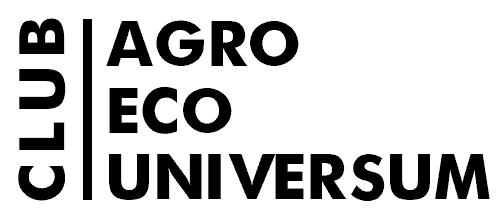Environment Impact Assessment Principles is the key to the successful implementation of any project

Environment Impact Assessment Principles minimizes environmental and social costs of project implementation
An assessment of the feasibility of implementing any construction project should take into account many factors: economic, technical, social and environmental. All of them are closely interconnected, and the mismatch of the constructed facility, for example, environmental criteria, may entail such long-term social, economic and technical consequences that would negate the feasibility of the project. For example, dam construction in the absence of proper environmental control can lead to downstream droughts or upstream flooding, which in turn can lead to a local humanitarian and environmental disaster. The most important criterion for the possibility of implementing any project besides the economic budget, technical regulations and public participation is the Environmental Impact Assessment (EIA) as a guarantee of environmental safety. This chapter is focused on the Environmental Impact Assessment (EIA) of the Titab Dam Project toward sustainable integrated water resource management (IWRM) in the Saba River Basin, Northern Bali, Indonesia.
The Environment Impact Assessment Principles is a tool for decision-makers to identify potential environmental impacts of proposed projects, evaluate alternative approaches, and design and incorporate appropriate prevention, mitigation, management, and monitoring measures.
The EIA shall address both positive and negative potential environmental impacts of the given project, any related social implications, as well as eventual transboundary effects. An EIA evaluates a project’s potential environmental and social risks and impacts in its area of influence. There are three environmental categories for field operations, labeled as A, B, and C.
Category A projects involve significant, cumulative, or even potentially irreversible negative environmental impacts or risks.
Category B projects do not entail significant (or potentially irreversible) negative environmental (and associated social) impacts, but may still have adverse effects, which can be mitigated with suitable preventive actions.
Furthermore, category C projects have minimal or no potential negative environmental (or social) impacts, either individually or cumulatively. They are not controversial in terms of the interests of key stakeholders.
The table below shows an example of an expert assessment of the project using the example of the construction of the Titab dam (fragment – full version by reference at the end of the text).

Environmental screening for category A or B projects on example of Titab Dam
As depicted in Table, Titab Dam project has adverse impacts on traditional practices or agricultural systems in the area. In the case of the land use change of the paddy fields because of the Titab Dam construction, some farmers who would like to continue their rice culture outside the project location are facing hardships because the land available for purchase is less than the one they sold. Titab Dam Project has exacerbated unresolved land tenure conflicts concerning rights or alternative uses of natural resources. Moreover, the entire extension dedicated to paddy fields inside Subak Dukuh were flooded following the project causing the Subak system to disappear altogether. The Subak Dukuh Temple was also destroyed that once held special Hindu ceremonies as an implementation of Tri Hita Karana philosophy at the Subak level. This means the project has adverse impacts on natural resources as well as properties of historic or cultural significance.
However, as practice shows, insoluble conflicts do not exist, and having an objective assessment of the impact of the dam on the environment, it was possible to more or less mitigate the confrontation between stakeholders and come to a consensus.
In particular, in the framework of the project on wide public participation, a community of the Saba River Basin community was created. Through multi-stakeholder meetings to reach common agreements, we managed to formulate the project “Realizing the sustainable Saba River Basin, the society welfare based on Tri Hita Karana (three happiness causes – the traditional philosophical and ethical concept of the Subak community) philosophy”. Specifically, action plans of Saba River Basin community involve garbage control followed by soil and water conservation.
Planning of soil and water conservation is achieved by planting cover crops, storied canopies, and construction of terraces, starting with land combating extremely severe erosion and severe erosion. The conservation action plan is also prepared for the green belt of the Titab Dam, which is about 44.67 ha. The good land cover is expected to achieve the optimal water recharge, so there will be a stable water discharge between the wet season and dry season.
The other economic benefit of the Titab Dam Project is the reservation of 1.5 MW of electricity, to develop a fishery system and appropriate tourism destinations. This power reserve can support approximately 1666 household connections with an average power capacity of 900 W. The fishery system, which is developed inside the Titab Dam, is stocking fish periodically. An agro-eco-tourism package inside the Saba River Basin, involving the Titab Dam destination, will be interesting.
The Melanting Waterfall and the Tamblingan Lake upstream of the basin are presently the best destinations for tourists. Diving and other marine activities and sunset views downstream of the basin are also very noteworthy. Tracking, fishing, and water sports will be enticing attractions when offered to future tourists inside and surrounding the Titab Dam.
As the study showed, the construction of large structures inevitably entails a change in the lifestyle of living people, the type of landscape and the ecological condition of the territory. However, based on a preliminary EIA, it is possible to evaluate the possible implementation of the project with the maximum satisfaction of the needs of all parties and minimal negative impacts.
Full Text:
Budiasa I. W., Kato H., Nakagami K. Reconsideration of the Meaning of Dam Construction for Water Resources Management: The Environmental Impact Assessment of the Titab Dam Project Toward Futurability of the Saba River Basin //Sustainable Water Management. – Springer, Singapore, 2016. – P. 97-107.
